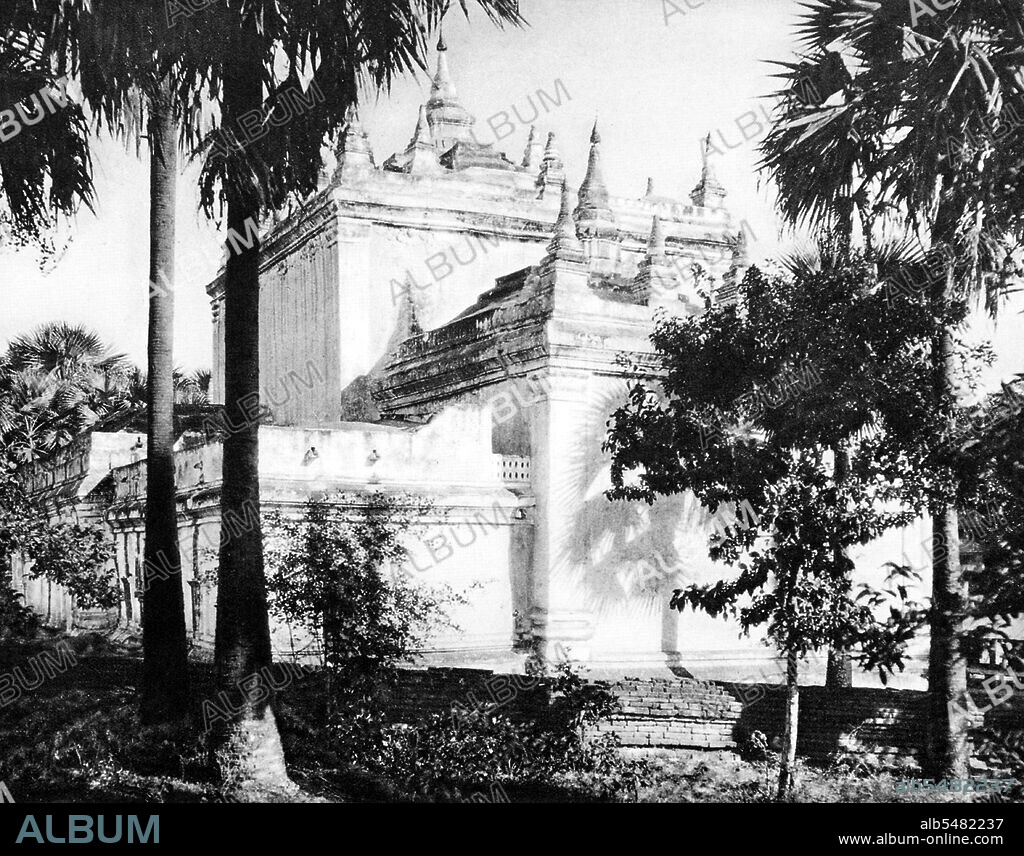alb5482237
Burma / Myanmar: Manuha temple in Bagan, Upper Burma, c.1920s.

|
Add to another lightbox |
|
Add to another lightbox |



Title:
Burma / Myanmar: Manuha temple in Bagan, Upper Burma, c.1920s.
Caption:
Manuha Temple is a Buddhist temple built in Myinkaba (located near Bagan), by King Manuha, the last Talaing king, in 1059-67. It is a rectangular building of two storeys. The building contains three images of seated Buddhas and an image of Buddha entering Nirvana. Manuha Temple is one of the oldest temples in Bagan. The ruins of Bagan (also spelled Pagan) cover an area of 16 square miles (41 km2). The majority of its buildings were built between the 11th and 13th centuries, during the time Bagan was the capital of the First Burmese Empire. It was not until King Pyinbya moved the capital to Bagan in 874 CE that it became a major city. However, in Burmese tradition, the capital shifted with each reign, and thus Bagan was once again abandoned until the reign of King Anawrahta who, in 1057, conquered the Mon capital of Thaton, and brought back the Tripitaka (Tipitaka) Pali scriptures, Buddhist monks and craftsmen to help transform Bagan into a religious and cultural centre. With the help of a monk from Lower Burma, Anawrahta made Theravada Buddhism the state religion. In the 12th and 13th centuries, Bagan became a truly cosmopolitan centre of Buddhist studies, attracting monks and students from as far as India, Sri Lanka as well as the Siamese and Khmer kingdoms. Among many other works, Aggava?sa's influential ‘Saddaniti,’ a grammar of the language of the Tripi?aka, would be completed there in 1154. In 1287, the kingdom fell to the Mongols, after refusing to pay tribute to Kublai Khan. Abandoned by the Burmese king and perhaps sacked by the Mongols, the city declined as a political centre, but continued to flourish as a place of Buddhist scholarship.
Credit:
Album / Pictures From History/Universal Images Group
Releases:
Model: No - Property: No
Rights questions?
Rights questions?
Image size:
4733 x 3712 px | 50.3 MB
Print size:
40.1 x 31.4 cm | 15.8 x 12.4 in (300 dpi)
Keywords:
ABBEY • ARCHITECTURE • ASIA PICTURES • ASIA • ASIAN IMAGE • ASIAN IMAGES • ASIAN PICTURES • ASIAN • BAGAN • BUDDHISM • BUDDHISM, BHUTANESE • BUDDHIST • BURMA • BURMESE • CLOISTER • CONVENT • CULT, BUDDHIST • HEATHEN • HISTORIA UNIVERSAL • HISTORICAL IMAGES • HISTORICAL PICTURES • HISTORICAL • HISTORY IMAGES • HISTORY PICTURES • HISTORY • MANUHA • MONASTERY • MYANMAR • MYINKABA • PAGAN • PAGANO • RELIGION • TALAING • TEMPERA • TEMPLE • TEMPLES • UPPER BURMA
 Pinterest
Pinterest Twitter
Twitter Facebook
Facebook Copy link
Copy link Email
Email

